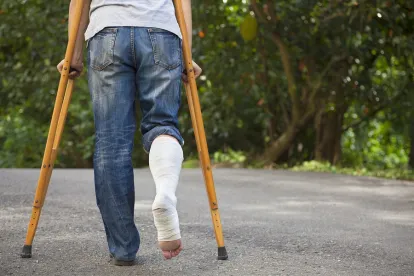In California, employees of host businesses may be able to file lawsuits against negligent third parties such as subcontractors or vendors who cause them injury while they are working. Third-party injury lawsuits may be filed even when the property owner is not at fault if the third parties create dangerous conditions at the location. In Cynthia Forgays v. Jorge Vivo, Los Angeles Superior Court Case No. BC549455, a server at a restaurant, was able to recover full damages from a negligent videographer who set up his equipment in a negligent manner at the restaurant where she worked.
Factual background of the case
Cynthia Forgays, a 59-year-old server, had worked at Spago restaurant in Beverly Hills for more than 12 years. While she worked there, her normal income was more than $50,000 per year. On Oct. 24, 2013, the restaurant was hosting a charity dinner and auction, and Forgays was working at the event as a server. There were monitors and televisions placed throughout the restaurant for the event by outside vendors. An audio consultant named Jorge Vivo set up video tripods that supported speakers for the event.
The tripod legs were black, and the restaurant was darkened for the auction and dinner. One tripod’s legs extended into the pathway that servers used to carry plates to and from the kitchen to serve guests. Unable to see the tripod leg because of the darkness, Forgays tripped and fell over it while she was carrying several dinner plates. She suffered severe lacerations to her right arm in her fall and required surgery as well as 18 months of physical rehabilitation. She filed a lawsuit against Vivo, alleging negligence.
Plaintiff’s arguments
Forgays contended that the speaker and tripod did not need to be placed in the walkway for the charity event. She also argued that the black tripod leg was almost invisible because of the dark lighting in the restaurant for the event and that it should not have been set up in such a way that its leg extended into the path by which the servers walked with plates from the kitchen. Because of the darkness, she also argued that the tripod legs should have been marked with reflective tape to make them more visible. Forgays also contended that despite her surgery and her subsequent rehabilitation, she was still not able to close her right fist and was thus unable to return to her job as a server.
Defendant’s arguments
The defendant argued that it was not his responsibility to maintain the restaurant in a manner that was safe for its workers and patrons. He instead argued that Spago and the event production vendor were responsible for doing so.
Pretrial demands and offers
Forgays made a §998 Demand of $750,000 on March 2, 2016. The defendant made a §998 offer of $45,001 on May 20, 2016, and of $175,001 on April 11, 2017. Neither side accepted the demand or offers of the other, so the case proceeded to trial before a jury.
Jury trial and verdict
The jury trial lasted for one week. Both the plaintiff and the defendant called medical experts and technical experts in their cases. After the parties rested, the case was sent to the jury for deliberation. The jury deliberated for one day before returning its verdict in favor of the plaintiff in the amount of $1,321,511. Because the jury allocated 40 percent of the fault to Spago and the event vendor, the net award to the plaintiff was $908,440 because they were not parties to the lawsuit. Of the gross verdict, $850,000 was for noneconomic damages and the remainder was for economic damages.
Third-party lawsuits by employees
Californians who are injured at work have the right to file for workers’ compensation benefits through their employers regardless of fault. In this case, Forgays could have also recovered benefits from her employer without including Spago in the lawsuit. Because of the availability of workers’ compensation benefits, employees waive their right to file lawsuits against their employers when they are injured at work. However, when negligent third-party vendors are at fault in causing accidents and resulting injuries to the workers, the workers may file lawsuits against the third parties.
In Forgays’ case, she filed a lawsuit against Vivo but did not name her employer or the event vendor as defendants. She could not have named her employer in the lawsuit, but she could have named the third-party event vendor as a co-defendant to the lawsuit. Since the jury allocated 40 percent of the fault to these non-parties, her gross verdict amount was reduced accordingly.
California follows the pure comparative negligence doctrine. Under this, juries and courts determine the percentage of fault that each of the parties and non-parties has in causing the injury accidents that result. If the plaintiffs or any non-parties are allocated percentages of fault, the gross verdicts will be reduced by that percentage. While Forgays was not found to have any fault, her award was reduced because the jury allocated 40 percent of the fault to the non-parties.
Source
http://www.juryverdictalert.com/jury-verdicts/item/highlighted-verdicts/cynthia-forgays-v-jorge-vivo



 />i
/>i

